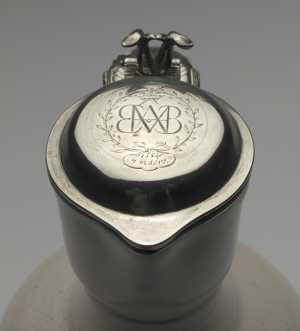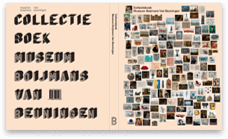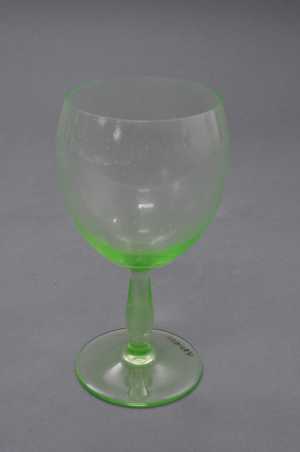This type of white faience wine jug appears in four paintings by Johannes Vermeer, generally with a silver or pewter lid. Such crockery, in the form of jugs, fluted dishes and decorative salt cellars were originally produced in Faenza in Italy. The design of these wine jugs was derived by the Italian potters from the popular earthenware jugs from the German Rhineland.
From the end of the 16th century it was also exported to the Netherlands. After the introduction of the spectacular white Italian service ware, the Dutch potters quickly started imitating it. It was the first time that food was served on plain white crockery.

Specifications
| Title | wine pitcher |
|---|---|
| Material and technique | Fayence, silver |
| Object type |
Wine pitcher
> Pitcher
> Tableware
> Kitchen and household
> Utensil
|
| Location | This object is in storage |
| Dimensions |
Height 21,5 cm Width 14 cm Depth 12 cm |
|---|---|
| Artists |
Potter:
Anoniem
|
| Accession number | A 3367 (KN&V) |
| Credits | Purchased 1955 |
| Department | Applied Arts & Design |
| Acquisition date | 1955 |
| Creation date | in 1625-1650 |
| Research |
Show research Alma |
| Material | |
| Object | |
| Geographical origin | Italy > Southern Europe > Europe |
| Geographical origin | The Netherlands > Western Europe > Europe |
























